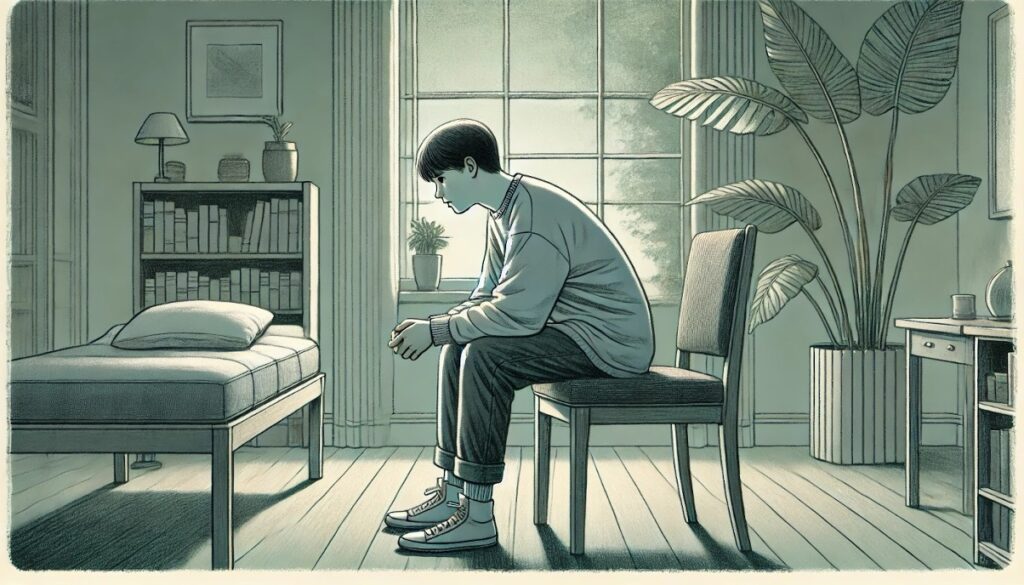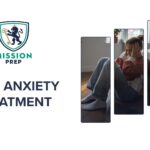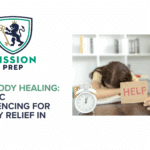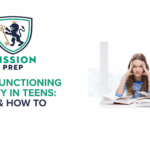Key Takeaways
- Teen anxiety is a state of constant worry that impacts every day activities.
- Persistent worrying about everyday situations, restlessness, sleep disturbances, and the inability to relax are common symptoms of teen anxiety.
- It is best to seek professional help if these symptoms persist.
- Mission Prep Healthcare offers personalized anxiety treatment for teens using a biopsychosocial model that incorporates somatic experiencing, CBT, and DBT in a structured setting.
Understanding Teen Anxiety
Teen anxiety is a common mental health condition characterized by excessive fear or worry about everyday situations. Unlike typical stress, which everyone experiences from time to time, anxiety can become overwhelming and persistent, interfering with a teen’s ability to function normally.
Teens with anxiety may experience a wide range of symptoms and recognizing them is the first step towards necessary support and intervention.
Causes of Anxiety in Teens
Anxiety in teenagers often stems from a mix of factors working together, rather than a single cause.
One major cause of anxiety in teens is academic pressure, which can come from parents, teachers, or the teens themselves. The expectations to perform well in school and achieve high grades can be overwhelming.
Social interactions and peer relationships also play a significant role. The desire to fit in, make friends, and avoid rejection can create immense stress and anxiety.
Impact on Daily Life
Anxiety can significantly affect your daily life, influencing your behavior, emotions, and physical health. It can interfere with your ability to concentrate in school, participate in social activities, and maintain healthy relationships.
Teens with anxiety may also avoid situations that trigger their symptoms, leading to isolation and missed opportunities for personal growth.
| Mission Prep: Adolescent Mental Health Care Mission Prep specializes in mental health treatment for teens aged 12-17, offering residential and outpatient programs for anxiety, depression, trauma, and mood disorders. Our therapies include CBT, DBT, EMDR, and TMS, tailored to each adolescent’s needs. With a structured, supportive environment, we integrate academic support and family involvement to promote lasting recovery. Our goal is to help teens build resilience and regain confidence in their future. Start your recovery journey with Mission Prep today! |
7 Most Common Symptoms of Teen Anxiety
1. Persistent Worrying
One of the most noticeable symptoms of anxiety is persistent worrying. This involves excessive concern about everyday situations such as school performance, social interactions, or future events.
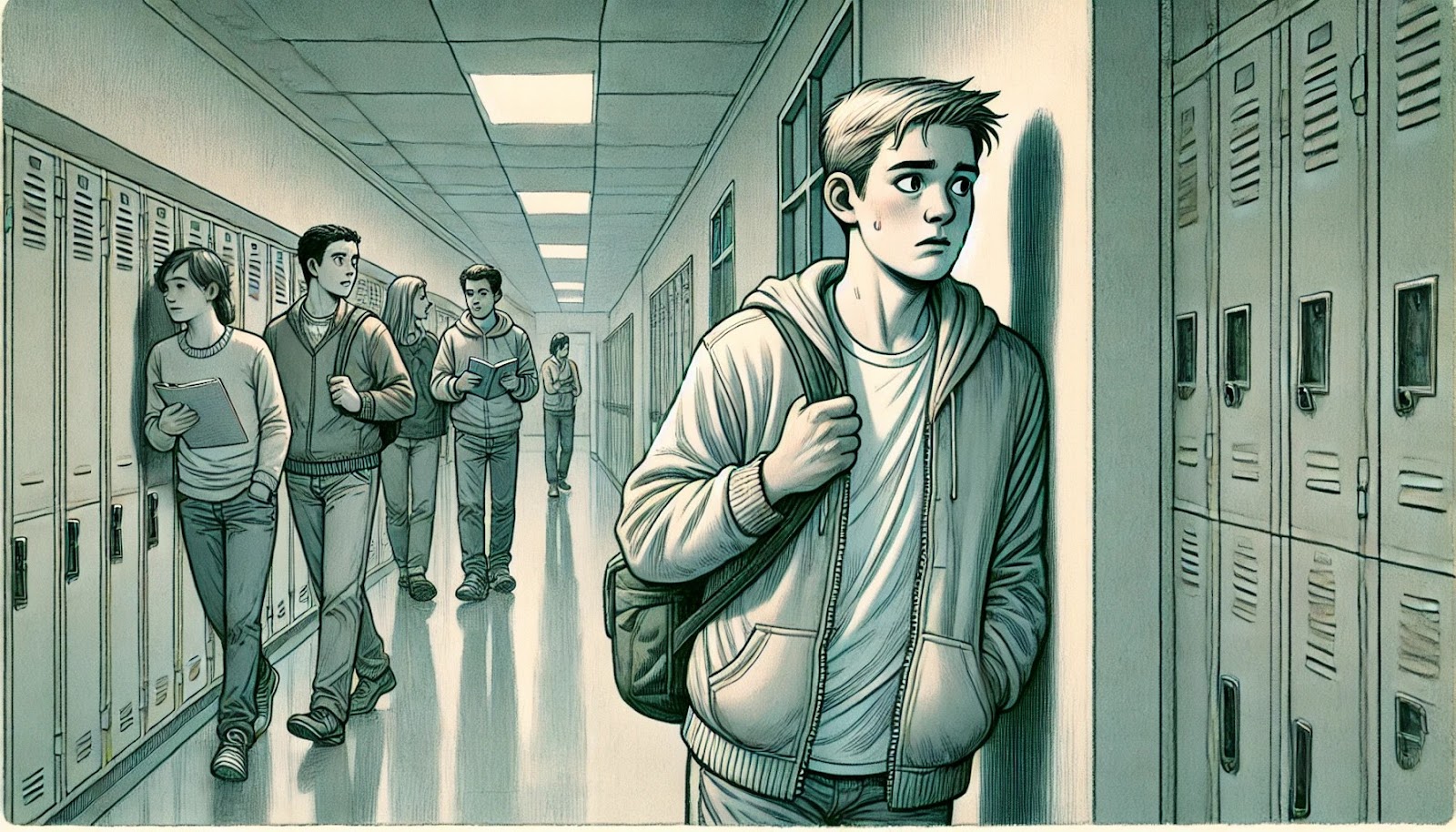
Additionally, you may experience feelings of dread or fear, often without a clear reason.
These worries can become all-consuming, making it difficult for you to focus on other activities. Address these concerns early, as they can lead to more severe anxiety disorders if left unchecked.
2. Restlessness
Teens experiencing anxiety often exhibit restlessness, characterized by an inability to relax or sit still. This restlessness can manifest as physical fidgeting, pacing, or an overall sense of unease.
3. Avoidance Behavior
Avoidance behavior is a common coping mechanism for anxious teens. You may avoid situations or activities that trigger your anxiety, such as attending school, participating in social events, or engaging in extracurricular activities. This avoidance can lead to isolation and further exacerbate anxiety symptoms.
4. Difficulty Concentrating
Anxiety can significantly impact your ability to concentrate. This can result in decreased academic performance, as you may struggle to focus on schoolwork or retain information.
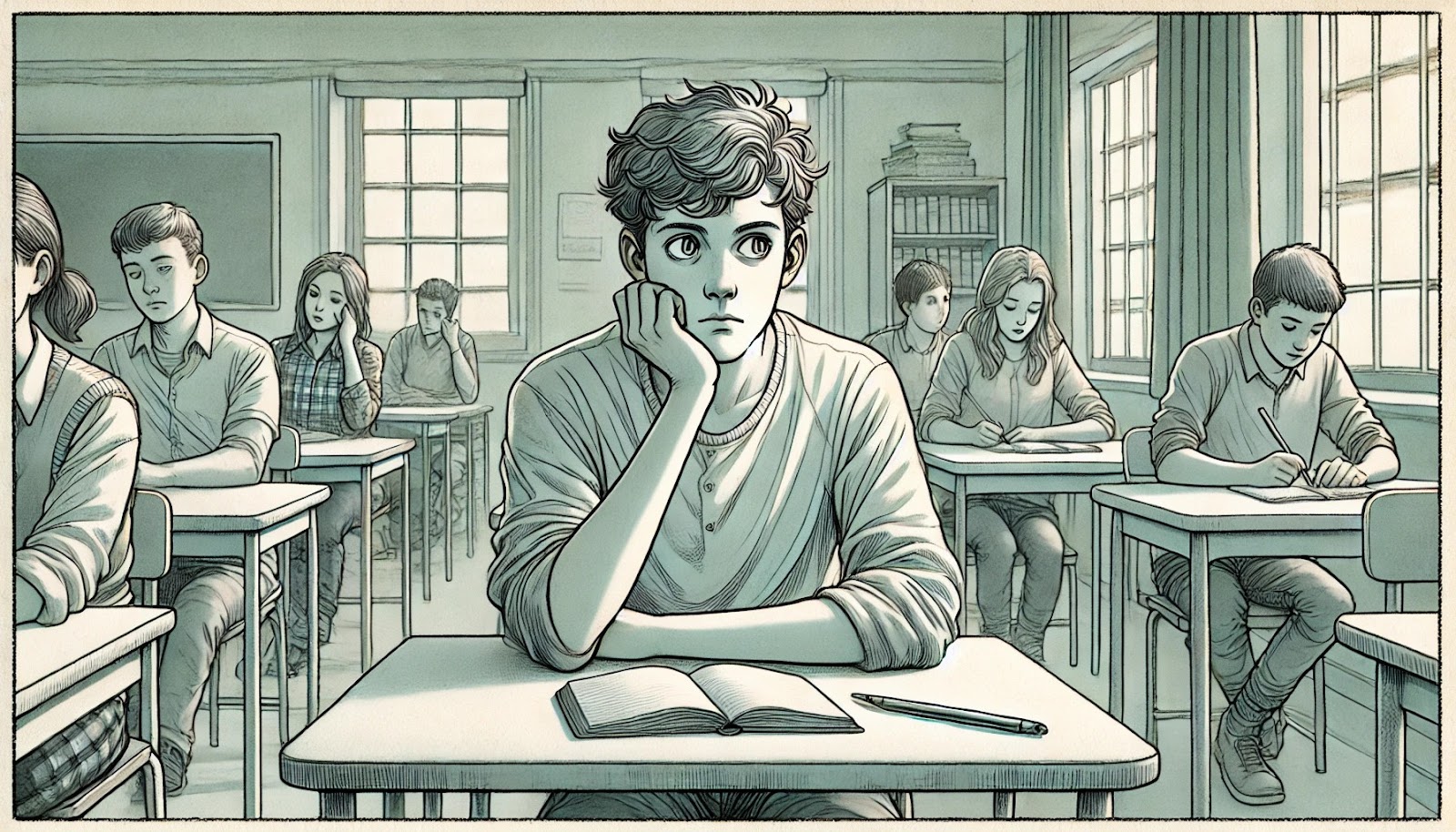
Also, you might appear distracted or daydream frequently, making it challenging to complete tasks efficiently.
5. Sleep Disturbances
Sleep disturbances are often associated with anxiety in teenagers. These can include difficulty falling asleep, staying asleep, or experiencing nightmares. Lack of restful sleep can further contribute to anxiety symptoms, creating a cycle that’s hard to break.
6. Physical Complaints
You may also experience physical complaints related to anxiety. These can include headaches, stomachaches, or unexplained aches and pains. consider these physical symptoms as potential indicators of underlying anxiety.
7. Mood Changes
Significant mood changes, such as irritability, anger, or sadness, can also be symptoms of anxiety in teens. These mood swings can occur without a clear cause and may affect relationships with family and peers.
Difference Between Normal Anxiety and Disorders

It’s natural for you to experience anxiety from time to time, especially during challenging situations. However, when anxiety becomes excessive and persistent, it may indicate an anxiety disorder.
Normal anxiety is typically short-lived and resolves once the stressful situation has passed. For example, feeling anxious before a big exam or a public speaking event is common and usually subsides afterward.
In contrast, anxiety disorders involve ongoing, intense anxiety that interferes with daily life. If you have anxiety disorders you may experience symptoms for weeks, months, or even longer.
Steps to Take If You Suspect Anxiety
If you think you’re experiencing anxiety, take action early. Addressing it sooner can help manage symptoms and prevent more serious mental health issues down the line.
When to Consult a Health Professional
If anxiety symptoms persist or worsen, it may be time to consult a health professional. A mental health expert, such as a psychologist or psychiatrist, can provide a proper diagnosis and recommend appropriate treatment options.
Seek professional help if anxiety significantly impacts your daily life, affecting your ability to function at school, maintain relationships, or enjoy activities they once loved.
Available Treatment Options
Several treatment options are available for teens with anxiety, and the most effective approach often involves a combination of therapies. Cognitive Behavioral Therapy (CBT) is a common and effective treatment that helps you identify and change negative thought patterns contributing to your anxiety. This therapy also equips you with coping strategies to manage anxiety symptoms effectively.
Medication may also be considered in some cases, particularly when anxiety symptoms are severe or resistant to therapy alone. However, medication should always be prescribed and monitored by a qualified healthcare professional.
Coping Strategies for Teens
Mindfulness and Relaxation Techniques
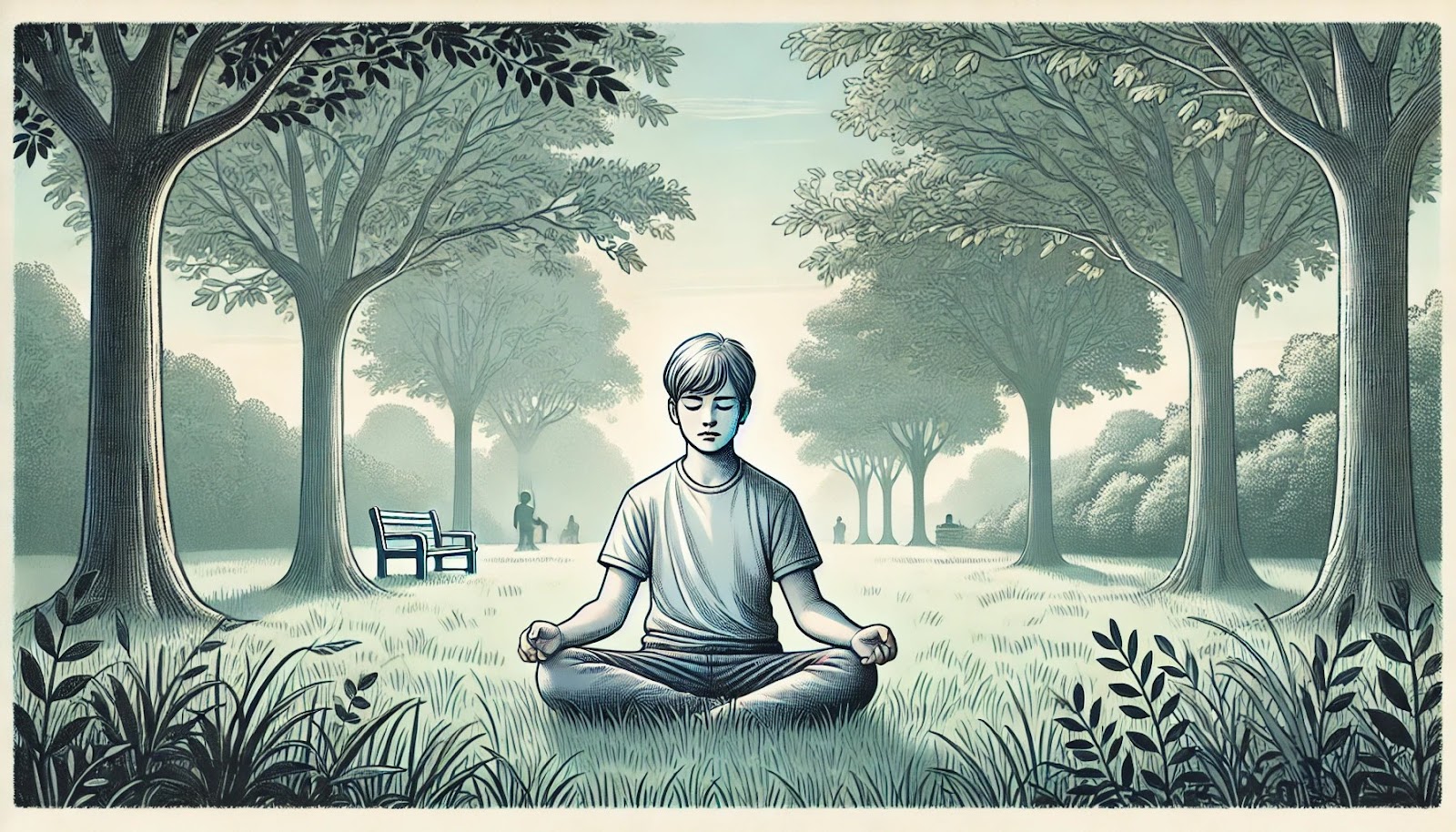
Techniques such as deep breathing, meditation, and progressive muscle relaxation can help calm the mind and reduce stress.
Guided imagery and visualization exercises can also be effective. These involve imagining a peaceful scene or situation, which can distract the mind from anxious thoughts and promote relaxation.
Support System
Family, friends, teachers, and mental health professionals can provide the encouragement and understanding needed to manage anxiety challenges.
Besides that, peer support groups can offer a sense of belonging and understanding. Connecting with others who share similar experiences can provide valuable insights and coping strategies, reducing feelings of isolation and helplessness.
Taking the Next Step in Your Anxiety Treatment Journey

Recognizing the signs of anxiety from persistent worrying and restlessness to mood changes is the first step toward healing. At Mission Prep, we understand that these symptoms aren’t just temporary challenges but serious indicators that can significantly impact your development and wellbeing.
Our approach to teen anxiety treatment goes beyond simply addressing symptoms. We use a comprehensive biopsychosocial model that examines how biology, psychology, and environment interact to create and maintain anxiety.
Through our treatment programs in Virginia and California, we provide the right environment and professional support you need to break the cycle of anxiety.
What truly sets us apart is our commitment to creating lasting change. We don’t just help you manage anxiety in the moment, we equip you with sustainable tools through CBT, Dialectical Behavioural Therapy (DBT), and somatic experiencing techniques that you can use throughout your lives.
Our multidisciplinary team of clinicians works closely with you to develop personalized coping strategies that address your unique anxiety triggers and patterns.
Don’t wait for the anxiety to worsen. Contact Mission Prep today for a thorough assessment and the beginning of a transformative healing journey.
Frequently Asked Questions(FAQ)
What triggers anxiety in teens?
Anxiety in teens can be triggered by various factors, including academic pressure, social dynamics, family changes, and personal experiences. Stressful events such as moving to a new school, experiencing bullying, or dealing with family conflicts can also contribute to anxiety. identify these triggers to develop effective coping strategies.
How can parents support anxious teens?
Parents can support anxious teens by fostering open communication and creating a safe environment for them to express their feelings. listen without judgment and validate their emotions. Encouraging healthy lifestyle habits, such as regular exercise, a balanced diet, and sufficient sleep, can also help manage anxiety.
What are effective teen anxiety treatments?
Effective treatments for teen anxiety often involve a combination of therapies. CBT is a widely used approach that helps teens identify and change negative thought patterns. Exposure therapy, which involves gradually facing anxiety-provoking situations, can also be beneficial.
Can lifestyle changes help reduce anxiety?
Lifestyle changes such as regular physical activity, nutritious diet, and adequate sleep can support overall mental health. Limiting caffeine and sugar intake can also help stabilize mood and reduce anxiety.
What makes Mission Prep’s approach to teen anxiety treatment unique?
Mission Prep Healthcare takes a comprehensive approach to treating teen anxiety through our biopsychosocial model. We begin with a thorough assessment during intake to understand each teen’s unique anxiety triggers and symptoms.
Our treatment combines somatic experiencing, CBT, and DBT to build sustainable tools for identifying and managing anxiety triggers in daily life.


